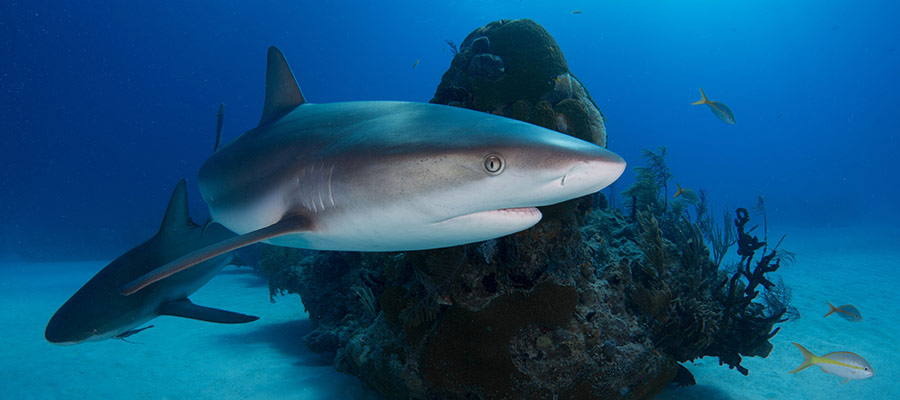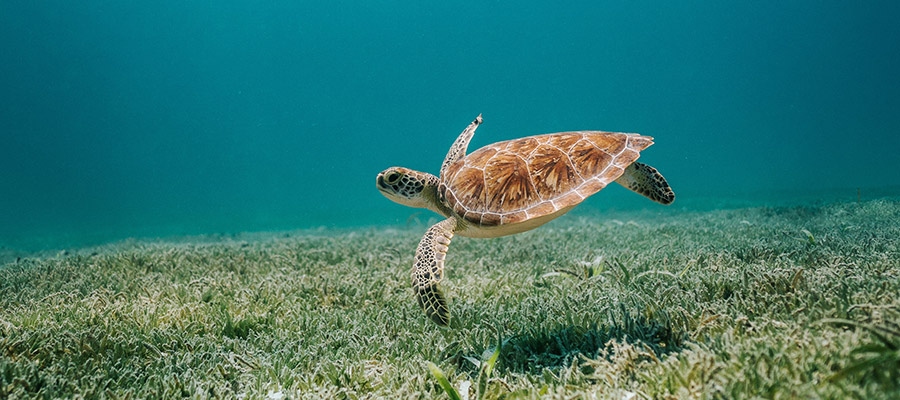The Wider Caribbean contains the largest groupings of Small Islands Developing States (SIDS) in the world, comprising a wide range of cultural and historical diversity. It is considered among the most densely populated regions globally, with a heavy dependence on coastal and marine resources for the sustainability of communities and their livelihoods.
Marine and coastal natural resources are particularly important in the Wider Caribbean not only as economic, but also as social, cultural, environmental assets. Coastal areas of the Caribbean contain some of the world’s most diverse and productive habitats and encompass extensive areas of complex ecosystems and unique species. Estimates1 of the extension of key ecosystems such as coral reefs are about 26,000 km², seagrass beds are about 66,000 km² and mangroves are about 11,560 km². Further data indicate that mangroves in the Caribbean have decreased by about 1% per year since 1980, that live coral cover has declined by as much as 80% in many areas, and that 35% of the region’s fish stocks are overexploited.

Threats to biodiversity and conservation of marine environments have been identified and studied to various degrees over the last several decades in the Caribbean. Among the major sources of anthropogenic pressures are: unsustainable fisheries, habitat degradation, and pollution which impact such ecosystems and benefits they offer to society, which may become aggravated due to climate variability and change2.
Resource-based goods and services generate more than US$80 billion annually, largely through tourism and fisheries revenue. Coral reefs alone generate between $3.1 and 4.6 billion across the Caribbean annually in fisheries, tourism and shoreline protection. It is projected that between $350 and 870 million will be lost annually through declining fish catch, dive tourism and shoreline protection associated with coral reef degradation if current trends continue3. Extrapolating from the figures above, protecting 20% of the Caribbean’s coral reefs would be worth between $600 million and 1 billion annually to the Caribbean region alone.
Countries are striving to seek meaningful and innovative solutions to pressures on the marine and coastal environments as well as new approaches for social and economic development. The ability of ecosystems to maintain their diversity and productivity, and to provide a wide array of valuable services to people is directly affected by the unsustainable use of living resources, which in turn undermines the resilience of marine and coastal ecosystems to provide such services including food, storm protection, erosion control, recreation, aesthetic values and nutrient cycling.

1. Miloslavich P, Díaz JM, Klein E, Alvarado JJ, Díaz C, Gobin J, et al. (2010). Marine Biodiversity in the Caribbean: Regional Estimates and Distribution Patterns. PLoS ONE 5(8): e11916.
https://doi.org/10.1371/journal.pone.0011916
2. UNDP/GEF (2013). The strategic action programme for the sustainable management of the shared living marine resources of the Caribbean and North Brazil shelf large marine ecosystems (CLME+ SAP) 140pp.
3. Waite, R., et al. (2014). Coastal Capital: Ecosystem Valuation for Decision Making in the Caribbean. Washington, DC: World Resources Institute.